Possible Adena Burial Mound
Introduction
Text-to-speech Audio
Historians believe that a possible Adena burial mound was situated near this location on what was once known as Grant’s Hill. The mound was never formally excavated and Grant’s Hill itself was removed in a series of gradations by the city of Pittsburgh between 1836 and 1914, making it impossible to know for sure whether or not the location (known locally as “The Hump”) was a burial site for Native peoples. The consensus among early Pittsburghers, however, was that Grant’s Hill did in fact feature a Native burial mound and this widespread agreement is shared by scholars today. The possible existence of a Native burial mound at this location serves as a reminder that Pittsburgh is built atop a long history of indigenous activities in the region. This reminder is especially poignant given that the site is now occupied by the Alleghany County Courthouse and the city council building, the civic center of a community built on the remains of a sacred center for Native life in western Pennsylvania.
Images
View of Pittsburgh from Grant's Hill, 1840
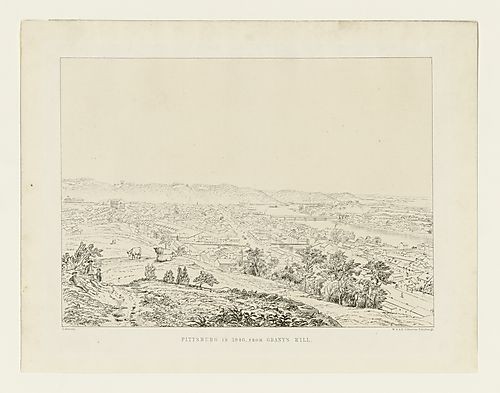
Excavation of "The Hump" in 1912
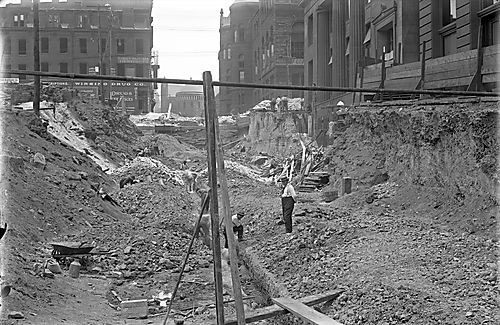
1913 Illustration of Street Level on Fifth Avenue Prior to Excavation of Grant's Hill in 1912
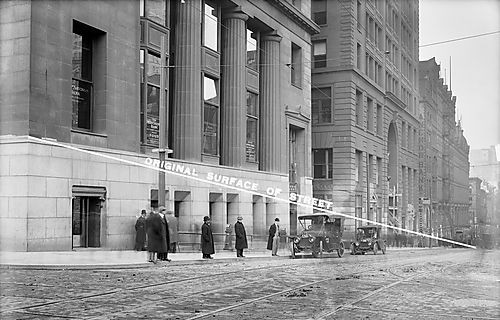
Map of the Range of the Adena Culture
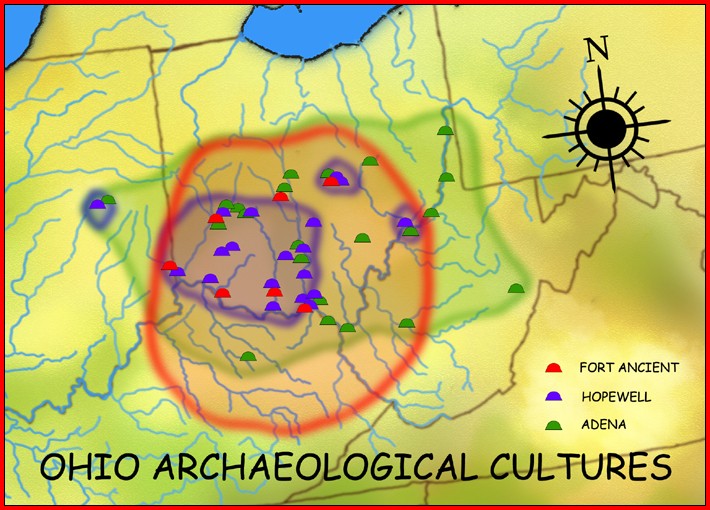
Adena Mound at McKees Rocks
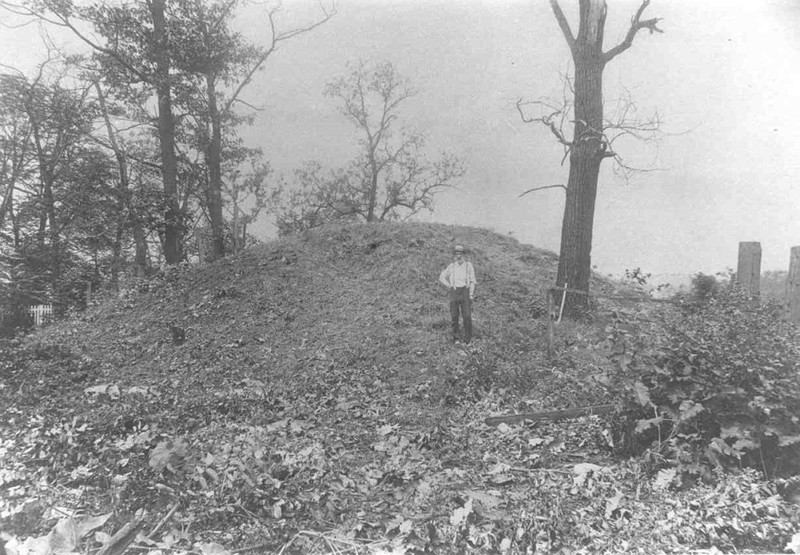
Backstory and Context
Text-to-speech Audio
Because other notable mounts in the Pittsburgh region like the one at McKees Rock were created by the Adena culture, modern historians posit that the possible burial mound near this location would likely have been of Adena derivation as well. The term Adena originated with Thomas Worthington, who named his estate near Chillicothe, Ohio “Adena” after a Hebrew word used in the Bible to characterize pleasantly situated lands. When scholars began investigating the Native burial mound located on Worthington’s property in 1807, they labeled it the “Adena Mound” and the name eventually came to be used to describe the culture responsible for similar mounds across the region erected between 800 BC and 100 AD. Today archaeologists believe the Adena peoples to likely have been members of several overlapping cultures sharing ceremonial and burial practices, rather than a single unified culture. Examples of the mounds constructed by these overlapping cultures are centered in the present-day state of Ohio, but can also be found across northern Kentucky, eastern Indiana, West Virginia, and western Pennsylvania.
Various archaeological excavations in areas surrounding burial mounds have given modern scholars an idea of how the Adena peoples may have lived. Members of the cultures identified as Adena typically lived in scattered communities surrounding burial mounds in circular houses with bark or wickerwork walls. They supplemented diets based on plants like squash and sunflower cultivation by hunting animals like deer and turkey as well as gathering edible seeds and nuts. The discovery of small stone tablets with geographic designs and animal patterns on them along with traces of paint has led modern archaeologists to suggest that members of Adena cultures used stones with wet paint as stamps to decorate clothing. The various excavations of Adena mounds have also provided insight into Adena beliefs regarding death. Stone tools and copper jewelry have been found laid ceremonially alongside buried individuals in such mounds, suggesting some conception of an afterlife where grave goods would be needed. The burials were also surrounded by a burned mortuary building and then covered with graded earth likely transported to the site in thousands of basketfuls, indicating ritual cremation and burial.
As far as modern scholars can determine based on vague descriptions from colonial observers, the possible Native burial mound on what became known as Grant’s Hill (or the Hump to Pittsburgh locals) seems to have matched the characteristics of Adena mounds. The most notable European observers were father and son Hugh Henry Brackenridge and Henry Marie Brackenridge. Brackenridge the elder, a member of the Pennsylvania Supreme Court, wrote in the Pittsburgh Gazette in 1786 that the mound appeared to be deliberately raised over top of stones, suggesting the presence of a mortuary building as in other Adena mounds. Brackenridge the younger (a Pennsylvania Congressman), meanwhile, wrote a treatise on Native burial mounds for former President Thomas Jefferson in 1813 that identified the Grant’s Hill mound as one he had investigated in his youth. He then goes on to suggest that the Grant’s Hill mound and others he had examined like Cahokia near what is now St. Louis, Missouri and the Grave Creek Mound in what is now Moundsville, West Virginia indicate that Native cultures prior to colonization were much larger than European estimates. Based on modern archaeological findings from the twentieth century onward at sites like McKees Rock, this is absolutely the case for western Pennsylvania and the Pittsburgh region. Native groups like the Adenas, and later the Hopewell (100 AD-1000 AD), Fort Ancient (1000 AD-1700 AD), Monongahela (1050 AD-1635 AD) cultures, established populous communities, far-ranging trading networks, and monumental burial mounds throughout what is now Ohio, West Virginia, Kentucky, and Pennsylvania.
Unfortunately, if a burial mound existed at what is now the site of the Allegheny County Courthouse and city building in downtown Pittsburgh as modern scholars believe, it has long since been erased from both the historical and physical landscape of the area. Historically, the mound’s place in history was subsumed by the Battle of Fort Duquesne, which took place on the rise on which the mound was sited on September 14, 1758. On that day, British General John Forbes ordered Major James Grant of the 77th Regiment of Foot to reconnoiter the approach to the French Fort Duquesne with 850 men. After Grant took it upon himself to instead attack the French position and his force was then destroyed, the rise on which the battle took place came to be known as Grant’s Hill. By the nineteenth century, it had become apparent to Pittsburghers that the location of Grant’s ignominious defeat was an impediment to their community’s development, a realization reflected in locals’ decision to bestow upon Grant’s Hill the undignified nickname of “The Hump.” In 1836, the city passed an ordinance to remove ten feet of soil from Grant’s Hill to make it easier for travelers to cross over it towards other parts of Pittsburgh. Scholars believe that the construction of the second Allegheny County Courthouse there in 1847 likely obliterated anything that might have remained of the possible Native burial mound. Grant’s Hill faced its own obliteration two years later, when another seven feet of soil was removed, as well as from 1912 to 1914, when the hill lost another sixteen feet. In all, somewhere between thirty and sixty feet of soil was transported off of Grant’s Hill and used as fill across the Pittsburgh area.
Though the possible Native burial mound in what is now downtown Pittsburgh has been erased from the area’s landscape along with the hill it crowned, its existence is a reminder that Native history beats at the heart of the city and surrounding region. Somewhere close to a thousand years ago a Native community may have identified what became Pittsburgh as the sacred center of their lives and built a burial mound to reflect the importance of the location in their worldview. The history of Pittsburgh from the eighteenth century onward is formed on a foundation of the indigenous past that came before it. Anyone interested in that history can visit the current site of the Allegheny County Courthouse and city building at this location or any of Pittsburgh’s museums dealing with Native history during their regular operating hours.
Sources
Aurand, Martin. The Spectator and the Topographical City. University of Pittsburgh Press, 2006.
Creagh, Kevin. This Used To Be Here — The Hump on Grant Street, The Point of Pittsburgh. January 6th 2015. Accessed August 4th 2021. https://thepointofpittsburgh.com/this-used-to-be-here-the-hump-on-grant-street/.
Dragoo, Don W.. Mounds for the Dead: An Analysis of the Adena Culture. Pittsburgh, PA`. Carnegie Museum of Natural History, 1989.
Fleming, George Thornton. History of Pittsburgh and Environs. Volume 1. New York. The American Historical Society, 1922.
"Grant's Hill: Removal of 'The Hump'," Brookline Connection. Accessed August 4th 2021. https://www.brooklineconnection.com/history/Facts/Hump.html.
The Story of Grant's Hill. Pittsburgh, PA. The Union Savings Bank, 1934.
Historic Pittsburgh
Historic Pittsburgh
Historic Pittsburgh
Wikipedia
Pennsylvania State Historic Preservation Office
